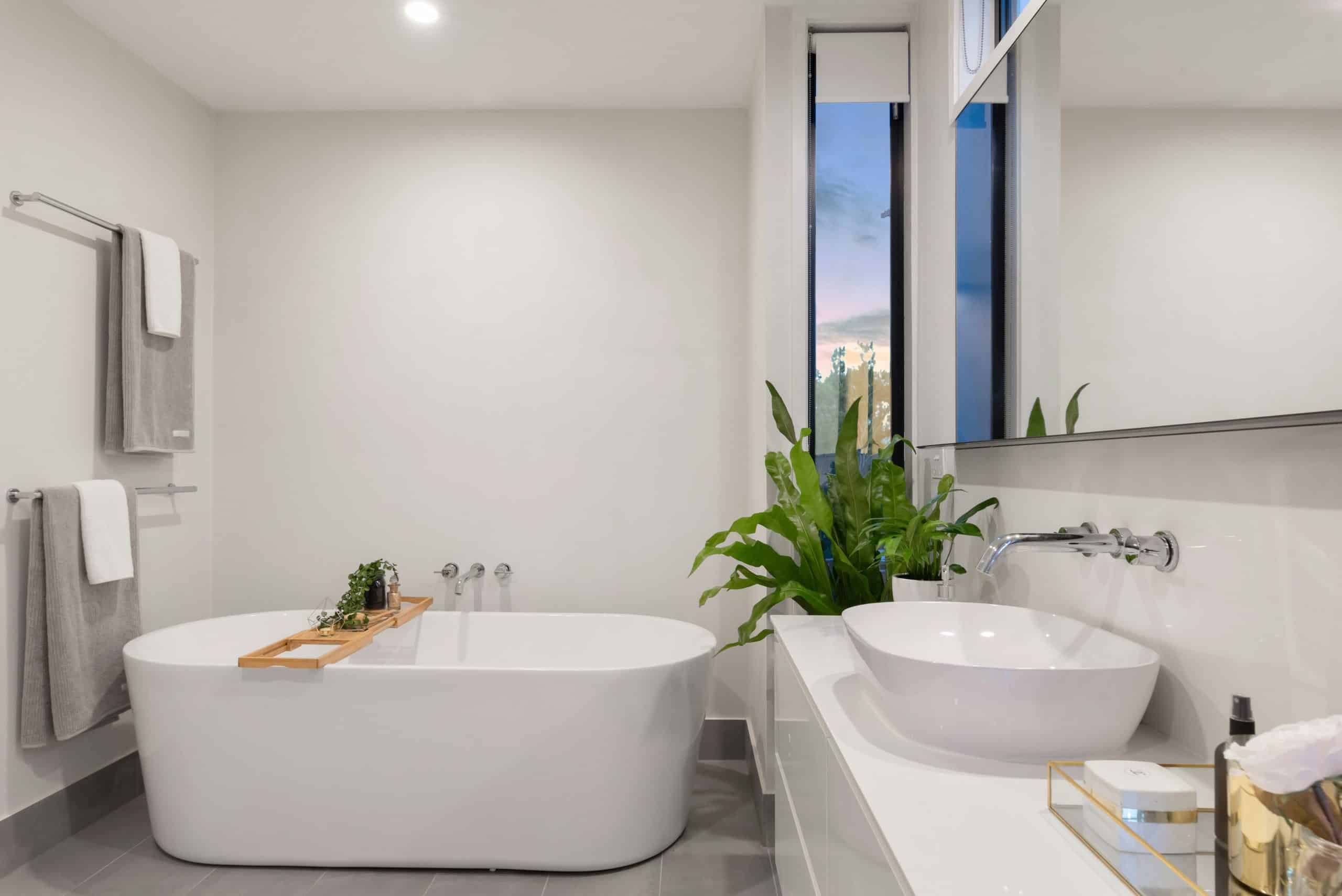As we move towards a more sustainable world, making eco-friendly choices in our own homes is an important step. One area that often gets overlooked is the bathroom. Yes, the humble bathroom, often seen as a purely functional space, has a significant role to play in our journey towards sustainability.
In this article, we will explore the essential features of an eco-friendly bathroom, focusing on the use of low-flow fixtures and natural materials. We will look at how these elements can reduce water and energy usage, and consider the benefits of green building materials.
In the same genre : How Can You Design a Home Exterior with Drought-Resistant Landscaping and Water Conservation Features?
Low-Flow Bathroom Fixtures
When we think about water usage in the bathroom, it’s easy to assume that this is a fixed cost – after all, we all need to shower, wash our hands, and use the toilet. However, how much water we use in these activities can vary widely depending on the fixtures we choose.
Low-flow fixtures are an essential element of an eco-friendly bathroom. These fixtures, which include showerheads, faucets, and toilets, are designed to reduce the amount of water they use, without compromising on performance.
Topic to read : How Can You Design a Functional and Stylish Boot Room for a Country Home with Storage for Outdoor Gear?
Low-flow showerheads, for example, can use less than half the water of a traditional showerhead. Similarly, a low-flow toilet can save up to two gallons of water per flush, compared to a standard toilet. These savings can quickly add up, leading to significant reductions in water usage, and in your water bill.
Yet, low-flow doesn’t mean low performance. Many people worry that a low-flow showerhead will result in a less satisfying shower, or that a low-flow toilet won’t flush effectively. However, modern low-flow fixtures are designed to maintain a strong water flow and effective performance, while using less water.
Natural Materials in Bathroom Design
The materials we choose for our bathroom can also have an environmental impact, and this is where natural materials come in. Natural materials, as the name suggests, are materials that are derived from nature, rather than created in a factory. They include materials like wood, stone, and bamboo.
In an eco-friendly bathroom, natural materials can be used in many ways. For example, a wooden vanity unit or bamboo flooring can add a touch of nature to your space, while also being a more sustainable choice.
Natural materials are not only green, but they can also be healthier. Synthetic materials can release harmful chemicals into the air, a process known as off-gassing. Natural materials, on the other hand, do not have this issue.
In addition, natural materials can often be sourced locally, reducing the carbon footprint associated with transporting materials from afar. They also tend to be durable and long-lasting, reducing the need for replacements and therefore waste.
Energy Efficient Lighting and Ventilation
Lighting and ventilation are two more areas where you can make eco-friendly choices in your bathroom.
Energy-efficient lighting, such as LED bulbs, can significantly reduce the amount of energy your bathroom uses. LED bulbs use up to 80% less energy than traditional bulbs and last up to 25 times longer.
Similarly, choosing an energy-efficient ventilation system can help to reduce your energy usage. A bathroom fan that is Energy Star certified, for example, uses 60% less energy than a standard model.
Not only do these choices reduce your energy usage and save you money, but they also help to create a more comfortable and enjoyable bathroom environment. Good lighting can make your bathroom feel larger and more inviting, while effective ventilation can prevent issues like mold and mildew.
Green Products and Practices
Finally, an eco-friendly bathroom isn’t just about the fixtures and materials you choose – it’s also about the products you use and the habits you form.
Choosing green products, like eco-friendly soaps and shampoos, can help to reduce the amount of harmful chemicals that end up in our waterways. Many of these products also come in packaging that is biodegradable or recyclable, reducing waste.
In addition, adopting water-saving habits, like turning off the tap while brushing your teeth or taking shorter showers, can further reduce your water usage.
Remember, every little change helps. The key is to start somewhere, and before you know it, you’ll have a bathroom that’s not only beautiful and functional, but also kind to the planet.
Use of Natural Light for Energy Conservation
Integrating natural light into your bathroom design is an essential step towards an eco-friendly bathroom. Natural light not only creates a warm and inviting space but also reduces the need for artificial light, thereby saving energy.
When it comes to harnessing natural light in your bathroom, consider the placement of windows or skylights. These features can significantly increase the amount of daylight your bathroom receives, reducing your dependence on artificial lighting. In fact, a well-placed window or skylight can provide enough light during the day to illuminate your bathroom without the need for any artificial light.
In addition to windows and skylights, mirrors can be an excellent tool for maximizing natural light. Placing mirrors strategically around your bathroom can reflect and amplify the available light, making the space feel larger and brighter.
Furthermore, using light-colored or reflective surfaces in your bathroom can also help to enhance natural light. For example, opting for light-colored tiles or paint can help to reflect natural light around the room, while dark colors tend to absorb light, making the room feel smaller and darker.
Remember, optimizing natural light in your bathroom not only reduces your energy consumption but also creates a healthier and more aesthetically pleasing environment. Plus, sunlight is a natural disinfectant, helping to keep your bathroom clean and germ-free.
Water-Saving Habits for Sustainable Bathrooms
Beyond fixtures and design, your habits in the bathroom can significantly affect your water usage. While it’s important to invest in low-flow fixtures and efficient appliances, the effectiveness of these tools is greatly increased when paired with water-conserving habits.
Simple actions like turning off the faucet while brushing your teeth or shaving can save several gallons of water each day. Similarly, opting for a shower instead of a bath can significantly reduce water usage. If you enjoy baths, consider reducing the number of baths you take or filling the tub less.
Another significant water-saving habit to consider is reducing your shower time. Spending just a few minutes less in the shower can save several gallons of water. You might even consider installing a shower timer to help you keep track of your water usage.
Lastly, make sure to fix any water leaks promptly. A dripping faucet or leaking toilet can waste hundreds of gallons of water each year. Regular maintenance of your bathroom fixtures can help prevent leaks and conserve water.
Remember, while eco-friendly fixtures and materials play a significant role in creating a green bathroom, it is your habits that have the most impact. Every small step you take towards water conservation contributes to a more sustainable bathroom and a healthier planet.
Conclusion
In conclusion, achieving an eco-friendly bathroom remodel that reduces water and energy consumption involves a multifaceted approach. From installing low-flow fixtures and energy-efficient lighting to using natural materials and optimizing natural light, every aspect of your bathroom design can contribute to sustainability.
Moreover, adopting water-saving habits, choosing green products, and maintaining your fixtures can significantly enhance your bathroom’s water efficiency. Overall, creating an eco-friendly bathroom requires a holistic approach, focusing not only on your choice of fixtures and materials but also on your daily habits and practices.
Remember, every small change you make towards sustainability can have a significant impact. So, start your green bathroom transformation today, and take one more step towards a more sustainable world.













